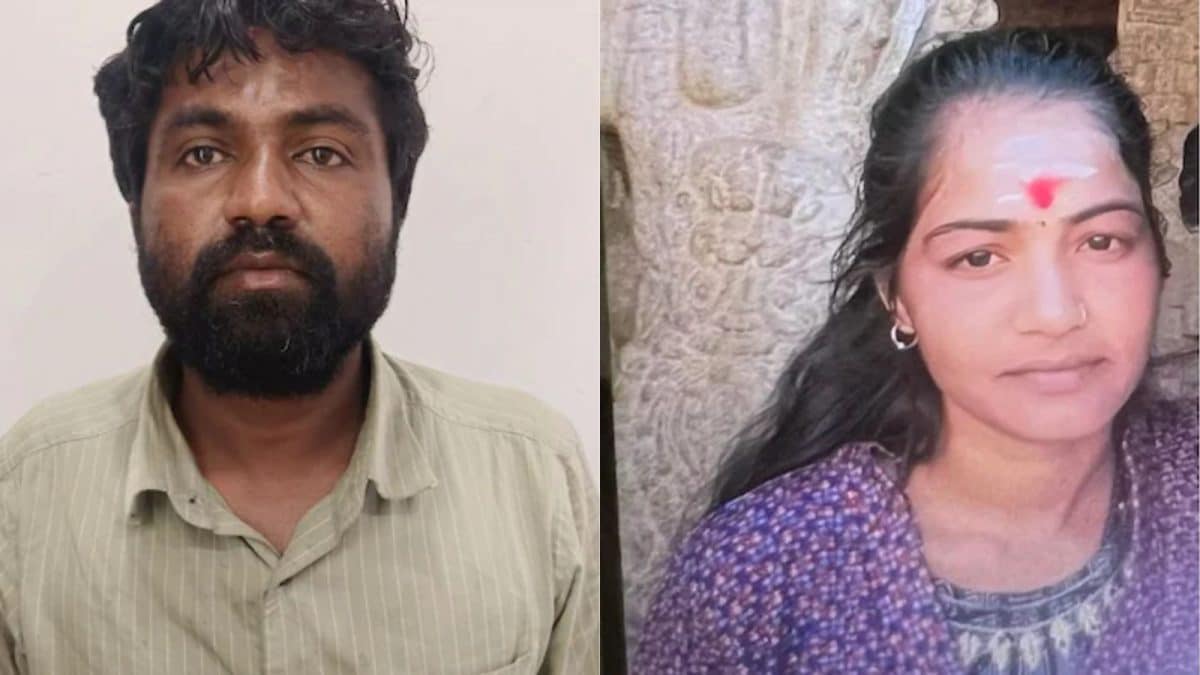Video Raises Questions About Deaths of Palestinian Emergency workers in Gaza
Table of Contents
- 1. Video Raises Questions About Deaths of Palestinian Emergency workers in Gaza
- 2. The Incident in Rafah
- 3. Conflicting Accounts and Ongoing Investigation
- 4. International Reaction and Calls for Accountability
- 5. Chronology of Events
- 6. What type of investigation is necessary too determine if the aid workers were deliberately targeted?
- 7. Interview: Unpacking the Rafah Incident and the Deaths of Palestinian Aid Workers
Footage from a paramedic’s phone contradicts Israeli claims about the circumstances surrounding the deaths of 15 aid workers in Rafah last month.
A disturbing video has surfaced, capturing the final moments of over a dozen Palestinian emergency responders who were killed by Israeli forces in Gaza in April. The footage, recovered from the phone of one of the deceased, challenges the Israeli military’s account of the incident, which claimed soldiers fired on vehicles “advancing suspiciously.” The incident, which occurred in the Rafah area of southern Gaza, has triggered international outrage adn calls for a thorough and impartial inquiry.
The Incident in Rafah
The Palestine Red Crescent Society (PRCS) reported that the video was discovered on the mobile phone of one of the 15 ambulance and relief team members who were killed by the Israeli military. The bodies of the aid workers, including eight members of the PRCS, five civil defense personnel, and one employee of the United Nations Relief and Works Agency for Palestine Refugees in the Near East (UNRWA), were found in a mass grave more than a week after they were reported missing, according to the agency.
The video depicts a convoy of ambulances, clearly marked with emergency lights flashing, traveling along a road at dawn. This visual evidence directly contradicts the statement issued by the Israel Defense Forces (IDF) that the vehicles were moving suspiciously without lights. This discrepancy raises serious questions about the accuracy of the IDF’s initial claims and the justification for the deadly force used.
The IDF asserted last week that “several uncoordinated vehicles were identified advancing suspiciously toward IDF troops without headlights or emergency signals.”
Israel Defense Forces
Following the emergence of the video, the IDF reiterated that the incident was under investigation.
“All claims, including the documentation circulating about the incident, will be thoroughly and deeply examined to understand the sequence of events and the handling of the situation,”
Israel Defense Forces
The PRCS maintains that the convoy was responding to calls for assistance to help injured civilians. The video shows the convoy stopping near another ambulance, presumably one that had been dispatched earlier. As rescuers, wearing identifiable uniforms, exit the vehicles, gunfire erupts.
The final moments captured on the video provide a harrowing account of the events.The paramedic filming,identified as Rifaat Radwan,is heard reciting the “shahada,” a Muslim declaration of faith frequently enough spoken when facing death.
“Forgive me mom, this is the path I chose – to help people. I swear I didn’t choose this path, but to help people.”
Rifaat Radwan, Paramedic
The sounds of intense gunfire impacting the vehicles are audible, and voices can be heard shouting commands in Hebrew.
Experts in ballistics and audio analysis could be brought in to further examine the available evidence, perhaps pinpointing the origin and type of weapons used, and helping to clarify the sequence of events leading up to the tragic loss of life.
Conflicting Accounts and Ongoing Investigation
Adding further complexity, on April 1, the IDF stated that “following an initial assessment, it was steadfast that the forces had eliminated a Hamas military operative, Mohammad Amin Ibrahim Shubaki, who took part in the 7 October massacre, along with eight other terrorists from Hamas and the Islamic Jihad.”
The PRCS has disputed this claim, stating that the UNRWA employee killed in the incident was not the individual named by the Israeli military. The IDF also suggested that terrorists were exploiting medical facilities, a claim vehemently denied by the PRCS and other humanitarian organizations.
The conflicting accounts highlight the urgent need for an independent and transparent investigation into the incident. The U.S. State Department has typically called for thorough investigations into civilian casualties in the conflict. A growing call for accountability from the U.S.public, as well as the international community, is getting louder with each incident.
International Reaction and Calls for Accountability
The deaths of the emergency workers have drawn widespread condemnation from international organizations and governments. Human rights groups have called for an independent investigation into the incident,emphasizing the need to uphold international humanitarian law and protect medical personnel and facilities.
The United Nations has also expressed concern over the incident and urged all parties to respect the neutrality and safety of humanitarian workers. The U.S. government, as a key ally of Israel, faces increasing pressure to ensure accountability and prevent future incidents that endanger civilians and aid workers.
For U.S. readers,this incident carries significant implications. it raises questions about the oversight and accountability mechanisms in place regarding U.S. military aid to Israel. It also fuels the ongoing debate about the U.S. role in the Israeli-Palestinian conflict and the need for a more proactive approach to protecting civilian lives.
Chronology of Events
| Date | Event | Source |
|---|---|---|
| April 1, 2024 | IDF claims to have eliminated a Hamas operative and eight other terrorists in the area. | IDF Statement |
| Mid-April 2024 | 15 Palestinian emergency workers reported missing in Rafah. | Palestine Red Crescent Society |
| Late April 2024 | Bodies of the missing workers found in a mass grave. | Palestine Red Crescent Society |
| Early May 2024 | Video surfaces showing the final moments of the emergency workers. | Palestine red Crescent Society |
What type of investigation is necessary too determine if the aid workers were deliberately targeted?
Interview: Unpacking the Rafah Incident and the Deaths of Palestinian Aid Workers
archyde News Editor Interviews Dr.Layla Hassan, Humanitarian law Expert, on the Rafah Tragedy
Archyde News Editor: Dr. Hassan, thank you for joining us today. The recent video footage emerging from Rafah, depicting the deaths of Palestinian emergency responders, has sparked international outrage. Can you provide some context on the legal implications of this incident under international humanitarian law?
Dr. Layla Hassan: Thank you for having me. the core principle being violated here is the protection of medical personnel and facilities. International humanitarian law, specifically the Geneva conventions, mandates that medical workers and ambulances, clearly marked in this very way, must be protected from attack during armed conflict. If the video accurately depicts the events, and the aid workers were deliberately targeted while performing their duties, this would constitute a grave breach, possibly a war crime.
Archyde News Editor: The Israeli Defense Forces (IDF) initially claimed the vehicles were moving suspiciously. The video appears to contradict this. How critical is it to establish the facts, and what type of investigation is necessary?
Dr. Layla Hassan: Establishing the facts is absolutely crucial. the IDF’s statement and the video evidence present conflicting narratives. An independant, impartial investigation is paramount. This needs to involve forensic experts, ballistics specialists to analyze the type of weapons used, audio and video analysts to examine the timing, and potentially, access to the scene of the incident. Ideally, this investigation should be conducted by a body that is not directly involved in the conflict to ensure objectivity. The investigation must also determine if the aid workers were deliberately targeted.
Archyde News Editor: The article mentions conflicting accounts regarding the identities of individuals present. What role does the identity of those killed play in establishing accountability, and can this complicate the process further?
Dr. Layla Hassan: The identity of those present is crucial to corroborate all the events. The Israeli claim that a Hamas operative was eliminated, is, if proven false, an example of how it complicates the events surrounding the incident. This can further undermine the IDF’s account and potentially heighten the severity of the alleged violation. It underscores the need for thorough fact-finding to address the specifics of each individual involved.
Archyde News Editor: The U.S. government has historically been involved in calls for investigation. Given the close ties between the U.S. and Israel,what kind of pressure can the U.S. exert to ensure accountability in this case?
dr. Layla Hassan: The U.S. has meaningful leverage. It provides significant military aid to Israel. The U.S. could condition this aid on credible investigations, adherence to international law, and accountability for any violations. Public statements condemning the incident, together wiht diplomatic pressure at the UN and other international forums, can also be used to highlight the importance of these investigations.
Archyde News Editor: The article notes the growing call for accountability from the international community. What further steps can international organizations, like the UN, and other governments take to add pressure for a credible investigation?
Dr. Layla Hassan: The UN can initiate its own investigations, collect evidence, and issue condemning statements. it can refer the matter to the International Criminal Court (ICC) if there’s sufficient evidence of potential war crimes—other governments can impose sanctions, restrict arms sales, and suspend diplomatic ties. It really comes down to political will and putting pressure on Israel to adhere to humanitarian law. Without that,accountability is unlikely.
Archyde News Editor: Looking ahead, how can the international community prevent similar incidents from happening in the future? What mechanisms are needed to protect medical personnel during armed conflicts?
Dr. Layla Hassan: Strengthening the implementation of international law and training of military personnel is absolutely essential. There needs to be strict adherence to rules of engagement, ensuring that targeting decisions prioritize the protection of civilians and medical personnel.Additionally, independent monitoring mechanisms and strong enforcement of accountability are key. If those responsible for violations, are brought to trial, this will act to protect workers in the future.
Archyde News Editor: Dr. Hassan, thank you for your time and insights.Your viewpoint provides crucial context to further understand and evaluate the implications of the tragedy in rafah.
Dr. Layla Hassan: Thank you for having me.
Archyde News Editor: We encourage our readers to share their thoughts in the comments section below. What do you think is the most critically important step to bring justice to the aid workers?








